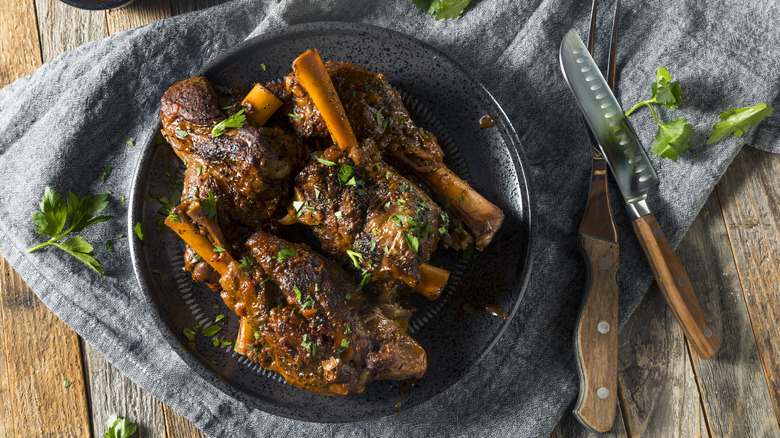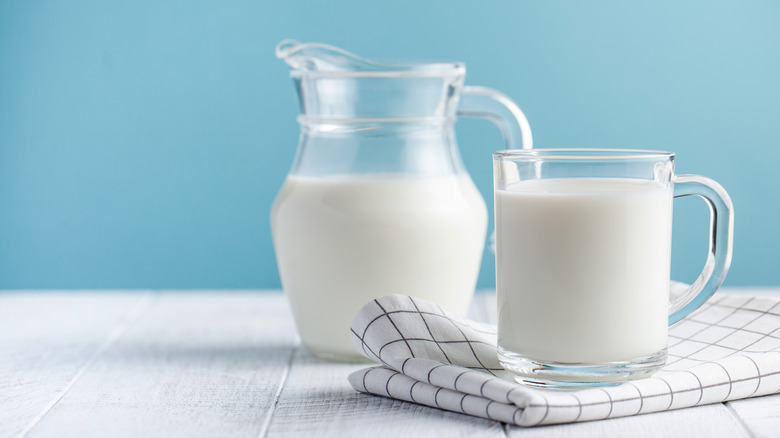The 17th Century Milk-Braising Technique That Still Holds Up Today
Some of the most classically delicious dishes we can think of employ braising as their cooking technique: That is, searing an ingredient — almost always some cut of meat — until browned, then simmering it in liquid over the course of several hours until it's fragrant and falling-apart tender. From osso bucco to pot roast and from pork carnitas to lamb neck, braising just has a way of taking sometimes-tough cuts of meat and rendering them soft, supple, and oh-so-comforting.
If you like to cook, you've no doubt done your fair share of braising at home. And when you've seared your meat and it's time to simmer it, what cooking liquid do you usually reach for? Most braises will call for water, red or white wine, beer, vegetable or meat broth or stock, or a combination of the above. But have you ever braised your meat in ... milk? Turns out, it's an ancient braising technique that can produce delectable braises that are incredibly tender and rich in flavor.
The lactic acid and sugars in milk produce tender, caramelized meats
It's possible you may have braised meat in coconut milk — such as in a Thai-style curry — or even in yogurt, such as this braised Syrian lamb. But have you ever gone straight for your carton of actual dairy milk when the cravin' for braisin' hits? If not, you most certainly should.
Braising meat in milk — strange as it might sound — is a centuries-old technique first mentioned in the 17th century. When milk is used as braising liquid — instead of, say, wine or broth — it imparts a uniquely delicious effect on meat. First, the lactic acid present in milk helps tenderize meat and keep it nice and moist. Secondly, the natural sugars in the milk come to the fore as the milk reduces, lending sweetness and complexity of flavor to the dish.
Milk braising is often seen in Italian cuisine, and perhaps the most famous milk-braised dish is that country's miale al latte, or milk-braised pork shoulder. But milk brings its A game to plenty of braised meats, from beef brisket to lamb shoulder to whole chicken — as long as it's whole milk, which ensures there's adequate fat.
The next time braising is on your mind, step away from the pantry — and towards the refrigerator.

